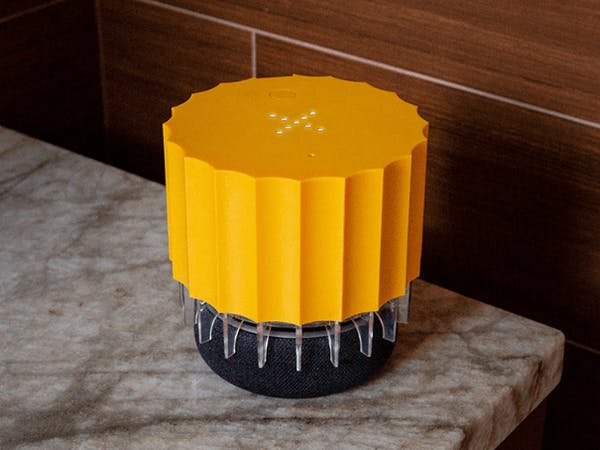Companies like Google and Facebook don’t have to charge you for their product, because you are the product they’re selling—or at least your data is. One individual’s internet habits, shopping tendencies, and interests aren’t that valuable, but when Google owns that data for the majority of internet users the value is enormous. Like Google and Facebook, Amazon understands how profitable data can be and their Alexa service on Echo devices is one avenue to gather it. MSCHF’s Alexagate is a device you can attach to your Amazon Echo to prevent it from listening to your conversations until you’re ready.
Amazon, like Google and Apple, denies that they use Alexa to spy on customers’ conversations. But there is quite a lot of evidence to the contrary. Even in the unlikely event that they’re telling the truth, Amazon is absolutely tracking your Alexa usage data. The Alexagate device physically prevents an Echo device from hearing anything you’re saying until you deactivate the audio blocking capability in order to intentionally issue a command. This is very similar to Bjørn Karmann’s Project Alias device that we covered a couple of years ago. Project Alias was just a concept prototype, but Alexagate is a real product that you can order right now.
Alexagate is an attractive yellow device that sits on top of your Amazon Echo (first generation through third generation). When you don’t want Amazon listening to you through the Alexa service, the device emits ultrasound pulses through transducers directed towards the Echo’s microphone. Those can’t be heard by the human ear, but they are picked up by the Echo and drown out whatever conversation is happening in the area. When you do want Alexa to listen to you, you just clap three times or tap Alexagate three times to temporarily deactivate the ultrasound transducers. The limited edition Alexagate device costs $99 — possibly more than you spent on the Echo itself, but that’s a small price to pay if you value both your privacy and the convenience that Alexa offers.





